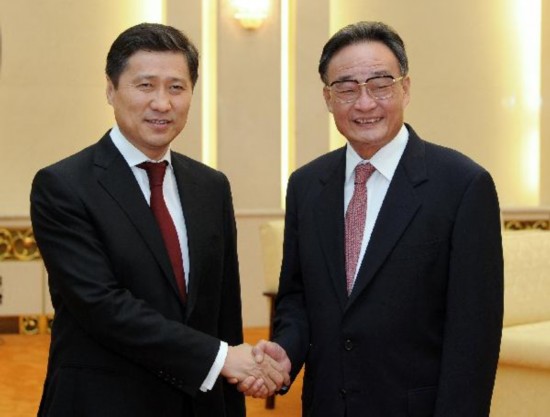The People’s Republic of China and Mongolia share a boundary line of 4,676 kilometers long. The two countries set up diplomatic relations on October 16, 1949. Over the 50 years since the establishment of diplomatic relations, Sino-Mongolian relations, though having undergone certain ups and downs, have remained friendly. Especially in the last 10 years or so, bilateral relations have witnessed rapid development with notable achievements in a number of fields.
Mongolia’s trade relations with China
According to Bill Bikales, Chief Economist for the UNDP in China, the two countries’ geographic proximity and mutually beneficial economic systems together constitute a framework for potential economic exchange that could turn Mongolia into a ‘Canada’ in relation to China’s ‘United States’.
Mongolia’s proximity to China is full of economic opportunities. China’s seemingly inexhaustible need for raw materials very much complements Mongolia’s agricultural and mineral based economy while the Chinese government and Chinese businesses are providing needed investment to the country’s growing mining and energy sectors.
Inter-regional trade has become increasingly important for China within the last fifteen years as the percentage of China’s overall inter-regional foreign trade has steadily grown. Indeed, Mongolia’s impressive economic growth since 2000 has in many ways been driven by Chinese demand and the boom of Mongolia’s mining sector, currently representing over 30% of all Mongolian economy and 68% of the country’s total export earnings. According to World Bank development indicators, the Gross Domestic Product (GDP) growth raised from 1.14% in 2000 (can be explained by the Asian financial crisis of 1998) to 17.5% in 2011.
In regards to trade, PRC became Mongolia’s largest export partner, absorbing 85.7% of all Mongolian’s exports in 2011 – for minerals such as copper and gold, animal products and cashmere. At the same time, a lack of development in the country’s manufacturing industry and the inflow of cheap Chinese goods have made China Mongolia’s most important import trade partner, representing 43.4% of imports from China mainly for machinery and equipment, manufactured products, building materials but also energy resources.
China’s desires for Mongolian raw materials
According to Jeffrey Liang of the Asian Development Bank, China’s foremost economic interest in regard to Mongolia is securing dominant position in the country’s newly emerging mining sector so as to strengthen its regional supply chains of minerals such as copper, gold and coal. Such Chinese investment tends to focus on infrastructure building as related to trade and development of mining-related infrastructure.
This strategy, in turn, has helped small and medium sized Chinese firms, as well as Chinese products, penetrate the domestic Mongolian economy.
This year, Chinese companies began construction on a highway from Mongolia’s border city of Zamiin-Uud to the East Gobi provincial capital of Sainshand. After the 124-km highway is completed, the entire 660-km highway from Mongolia’s capital of Ulan Bator to China’s border city of Ereen Hot will be open according to Chinese Ambassador Wang Xiaolong’s declaration in May 2013.
Earlier this year, Wu Bangguo, China’s top legislator’s, visit to Mongolia to further expand economic and trade cooperation by launching several large-scale projects. During that meeting with Mongolian Prime Minister Norovyn Altankhuyag, Wu particularly mentioned cooperation in mineral resources exploration, infrastructure construction and the financial sector.
Regardless of the motivation behind Chinese decisions to use infrastructure development to assure access to Mongolia’s minerals, this situation has led to an increase in Mongolian dependency towards the PRC. The majority of Mongolian exports to China are in the form of raw materials that China then processes and re-sells back to Mongolia for a higher price.
Eric TRAN – Eric is living in Ulan Bator, Mongolia since 2013. He is also working at MGlobal Link (www.mgloballink.com). – article for Daxue China Market Research
Sources:






